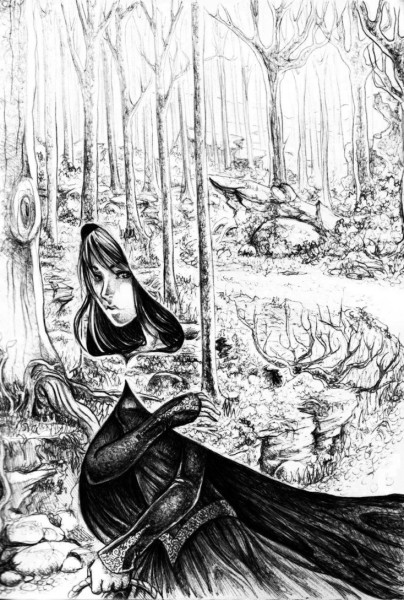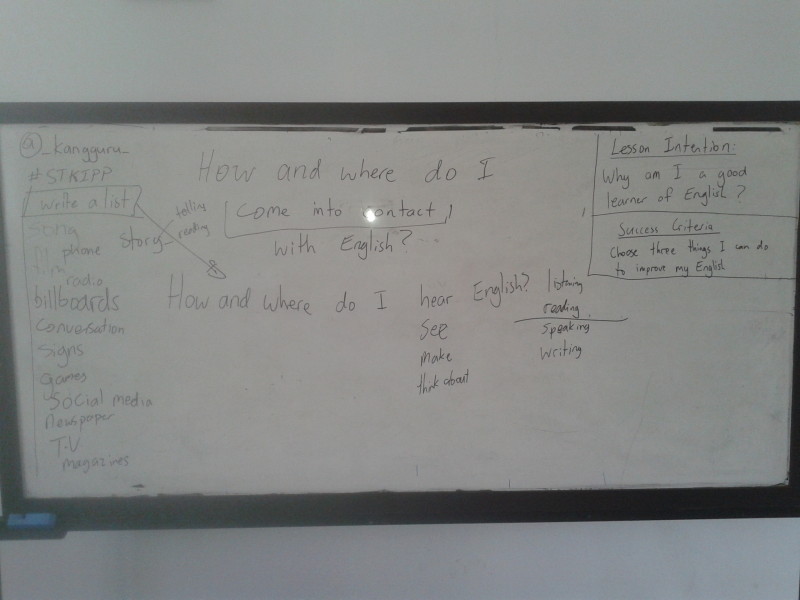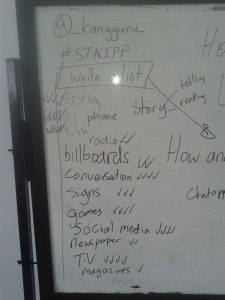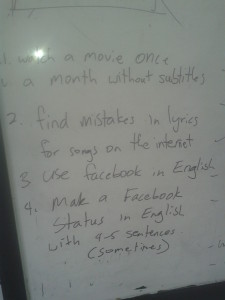
Image Credit: Zinfer
Please accept my apologies. I am currently editing this article for publication. I expect to have this finished by early November. I will share the article via Twitter (@_kangguru_), my Facebook page Kangguru.ELT and in the Indonesian English Teachers’ Club. Please consider “following”, ”Liking” and and joining these respectively.
Abstract
English teachers spend a lot of time and effort on learning new ways to make their lessons more interesting and engaging or ensuring that their lessons meet the requirements of the Curriculum. These are important aspects of our job but unfortunately this focus often comes at the expense of improving general teaching skills. General teaching skills make the rest of our job easier and more productive; they allow us to spend more class time immersed in the business of teaching and learning. In this workshop I will focus on a number of basic teaching skills that every teacher should aim to master, no matter what subject they teach. These strategies have been chosen on the basis of research that shows them to be among the most effective for improving student outcomes. The main source for these is the meta-study by a team led by John Hattie which is the largest meta-study ever conducted within the field of education.
Introduction
So what’s the Predator got to do with learning?
A lot of the time in class, students do not really know what the lesson is about or what they are supposed to be doing. This seems strange to us because it seems so obvious. When students can’t see the goal of learning, what the lesson is about or how to finish the task successfully, it can be confusing and even frightening. They struggle with an opponent that they cannot see or understand.
The key practical message of the workshop:
We must make teaching and learning “visible”.
It is visible teaching and learning by teachers and students that makes the difference. (Hattie, 2009, p. 22)
The goal of effective teachers is to make the processes of teaching and learning visible to both ourselves as teachers and equally importantly, to our students. We all need to be able to see what is happening inside and outside of class in this great adventure we call education.
Teaching and learning become visible when eight things happen:
- when learning is the explicit goal,
- when work is challenging,
- when teachers and students both decide how well learning goals are met,
- when there is deliberate practice aimed at attaining mastery of the goal,
- when there is well structured two-way feedback
- when everyone involved is active, passionate, and engaging
- when teachers see learning through the eyes of students and
- when students see teaching as the key to their ongoing learning.
Key Philosophical Message:
The more the student becomes the teacher and the more the teacher becomes the learner, then the more successful are the outcomes.
One of the most amazing things to come out of Hattie’s research is that the best student learning happens when teachers become learners of their own teaching, and when students become their own teachers. This point is so important it’s worth re-reading it to make sure that you really understand.
When students become their own teachers we can see them behave in ways that we associate with good learners; they engage in: self-monitoring, self-evaluation, self-assessment and self-teaching. The most important thing that we need to focus on is that our teaching is visible to the student, and that student learning is visible to us. The more that students becomes the teacher and the more the teacher becomes the learner, the better the outcomes (Hattie, 2009, p. 25).
So although I will talk about a few strategies in this workshop, this presentation is not really about those or any other specific strategies. There are no guaranteed strategies or magic bullets in teaching. It’s about changing the way we think about what teaching and learning are.
The goal that I want you to focus on here is the philosophy itself and we can find that philosophy embedded in these strategies. All it takes to really discover this philosophy is reflection on these strategies when implemented as a whole and critical thinking while reflecting on the theories and our implementation of them.
This article relies heavily on the research based conclusions presented in John Hattie’s book Visible Learning [download link]. His book is based on the results largest meta-study ever conducted within the discipline/s of education conducted by a team led by Hattie. A meta-study is a type of research that looks at the results of many other pieces of research. Hattie’s work is a meta-study of other meta-studies. What that means is he conducted a meta-study on over 800 other meta-studies. These meta-studies in turn were analyses of over 50.000 individual research projects. So the data which informs his book is the product of over 50.000 education research studies.
Please see my post Understanding Hattie’s Barometer for an explanation of the diagrams used in this article.
In this workshop I will focus following strategies although not all of them will be covered in this post:

Key:
- Rank: Position of the strategy in the study out of a total of 138 assessed strategies/categories.
- Source: Source of the effect out of Curriculum, Home, School, Student, Teacher and Teaching.
- Strategy
- Effect Size of the strategy (see Understanding Hattie’s Barometer for an explanation of this term).
So, let’s get started:
Continue reading part two: Feedback
Last updated: October 29, 2013 at 4:08 am






